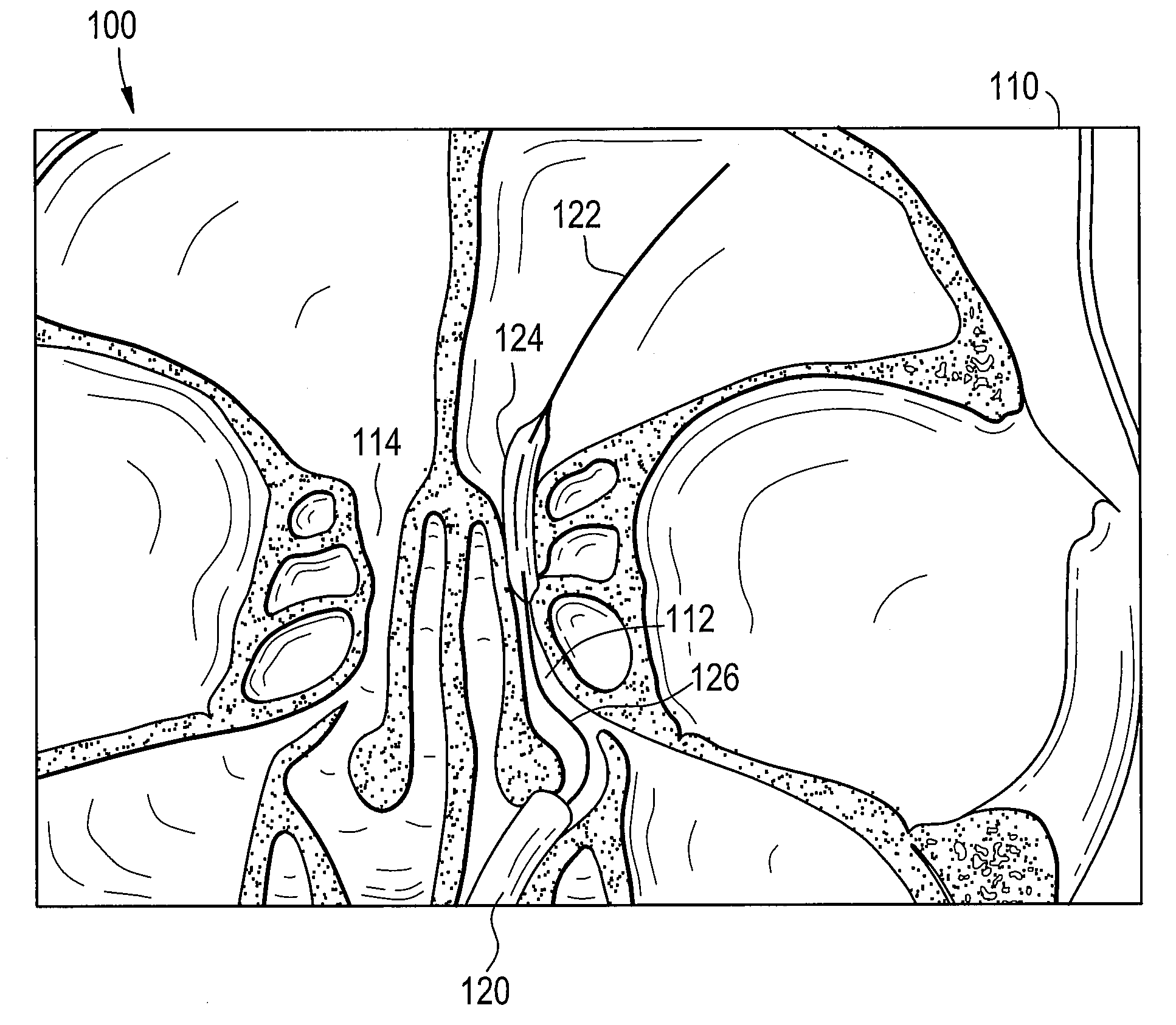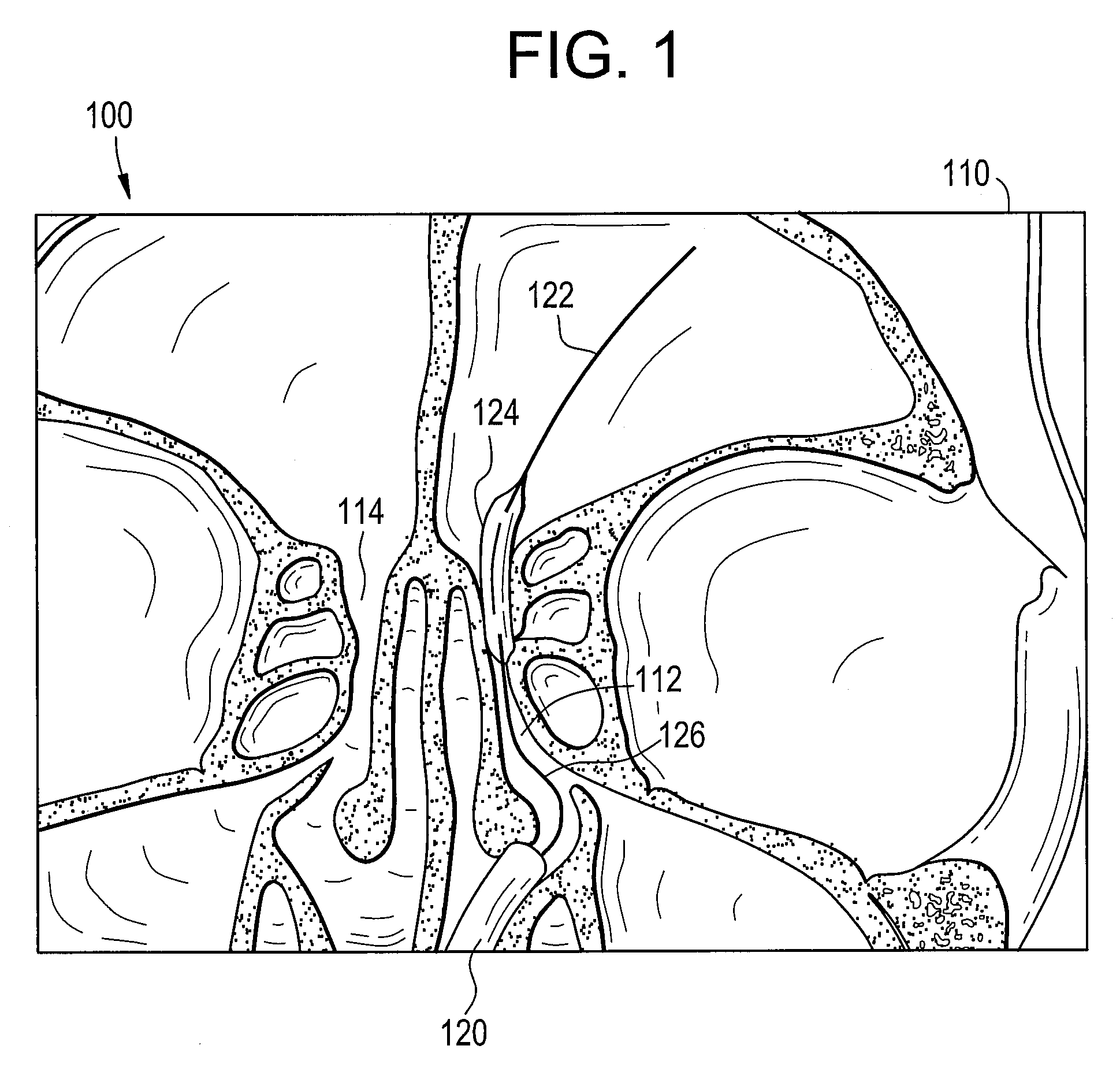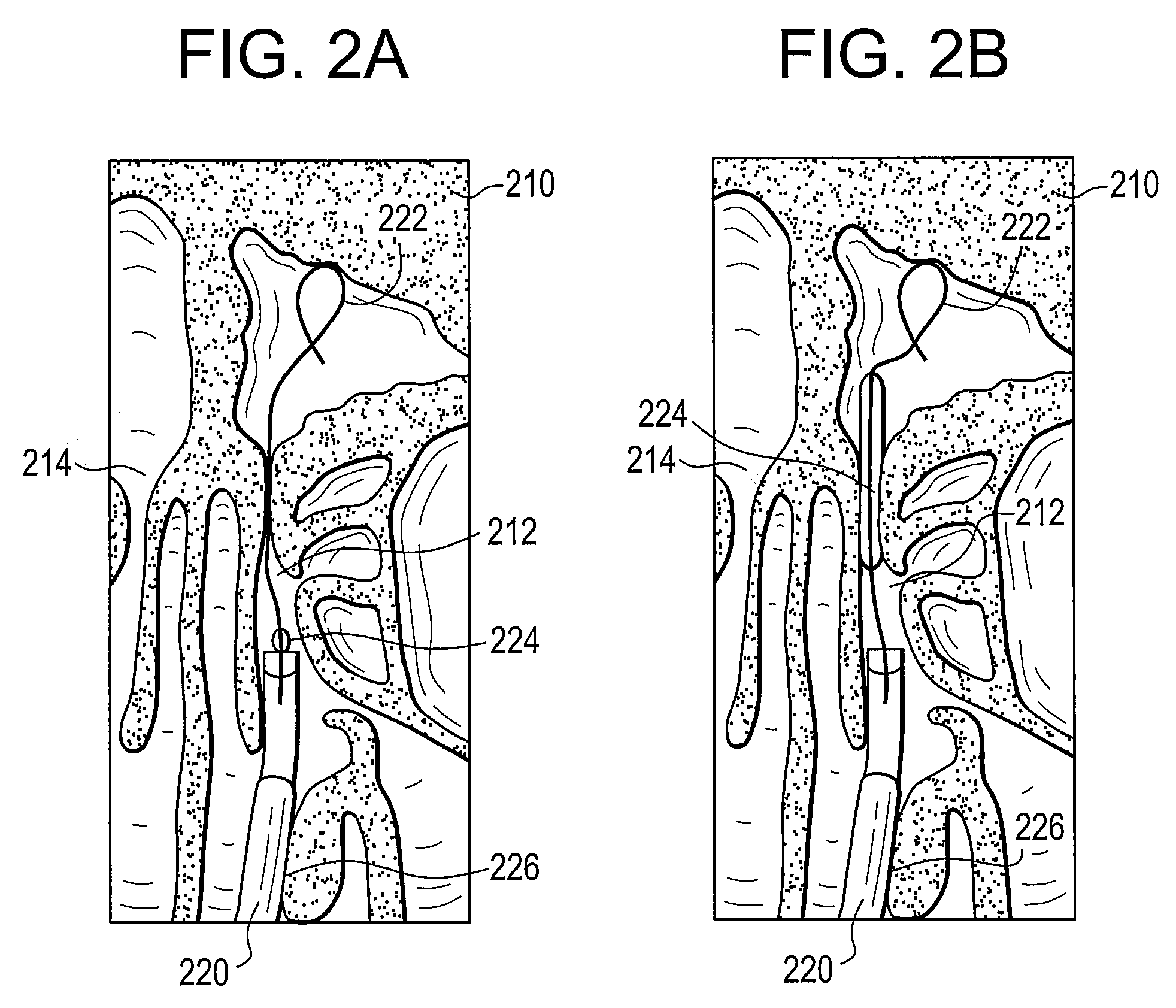System and Method for Use of Fluoroscope and Computed Tomography Registration for Sinuplasty Navigation
a technology of computed tomography and navigation system, which is applied in the field of medical device navigation system and method, can solve the problems of inability to accurately register external markers or headsets using keyboards or mouse, time-consuming and laborious, and improve the accuracy of medical device navigation
- Summary
- Abstract
- Description
- Claims
- Application Information
AI Technical Summary
Benefits of technology
Problems solved by technology
Method used
Image
Examples
Embodiment Construction
[0033]FIG. 1 illustrates an exemplary sinuplasty system 100 as used in accordance with an embodiment of the present invention. The sinuplasty system 100 includes a sinuplasty device 120, a guide wire 122, catheter balloon 124, and cannula 126. The sinuplasty system 100 illustrated in FIG. 1 is located inside the cranial region 110 of a patient. The patient's cranial region 110 further includes a sinus passageway 112 and a sinus passageway 114. More specifically, the sinuplasty device 120 is located in the patient's sinus passageway 112. A sinus passageway may also be known as an ostium. The sinuplasty device 120 contains several components, including the guide wire 122, the catheter balloon 124, and the cannula 126.
[0034]Sinuplasty is a medical procedure utilizing a device to enlarge a sinus passageway of a patient. More specifically, as illustrated in the simplified example of FIG. 1, the sinuplasty device 120 is inserted into the cranial region 110 of a patient. The sinuplasty dev...
PUM
 Login to View More
Login to View More Abstract
Description
Claims
Application Information
 Login to View More
Login to View More - R&D
- Intellectual Property
- Life Sciences
- Materials
- Tech Scout
- Unparalleled Data Quality
- Higher Quality Content
- 60% Fewer Hallucinations
Browse by: Latest US Patents, China's latest patents, Technical Efficacy Thesaurus, Application Domain, Technology Topic, Popular Technical Reports.
© 2025 PatSnap. All rights reserved.Legal|Privacy policy|Modern Slavery Act Transparency Statement|Sitemap|About US| Contact US: help@patsnap.com



